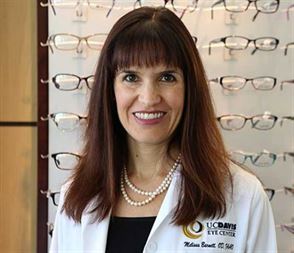Jade Coats, O.D.
Kicking up the management and treatment of dry eye disease in my practice is first and foremost, beneficial to the patient. Simply by incorporating additional screening questions into the standard workup, my technicians have been taught to identify a dry eye patient from a mile away. Once we started listening to a patient’s subtle dry eye complaints and started investigating further with corneal staining and topography, it has made me more aware that a significant portion of my patients (of all ages!) are affected by dry eye at some point in their lives.
It’s always awesome to see the lightbulb go off in a patient’s head when they finally understand the correlation to overhead ceiling fan use and chronic blurriness worse in the mornings, or that their watery eyes are actually a form of dry eye. By taking the time to educate these patients on why their eyes feel the way they do and what their treatment options are, it seems the patients are not only more educated on their condition, but also more diligent with their dry eye follow up appointments.
In addition to being beneficial for the patient, treating dry eye is also beneficial for the practice. Implementing a recommended follow up plan that typically involves 2 to 4 appointments annually sometimes helps motivate the patient to be persistent with their treatment regimen. It seems that when a patient has a better understanding of their dry eye disease, they are more receptive and committed to their dry eye treatment plans and follow up appointments.
By educating patients on the signs and symptoms of dry eye, I endeavor to at least bring awareness to the problem that may be the underlying issue of a patient’s ocular and visual complaints. Ramping up my dry eye investigation in the way that I practice optometry has been in the best interested of both the patient and practice.












